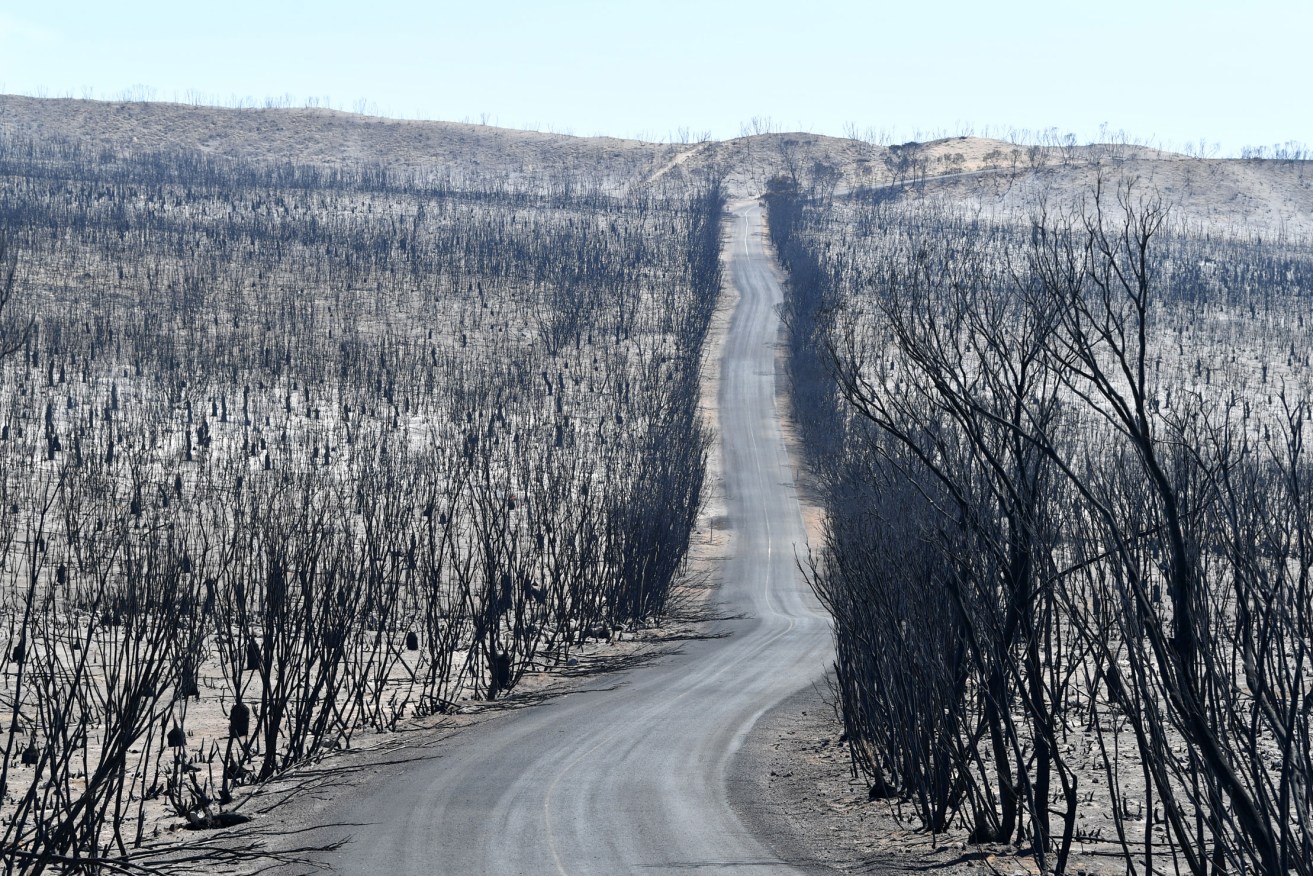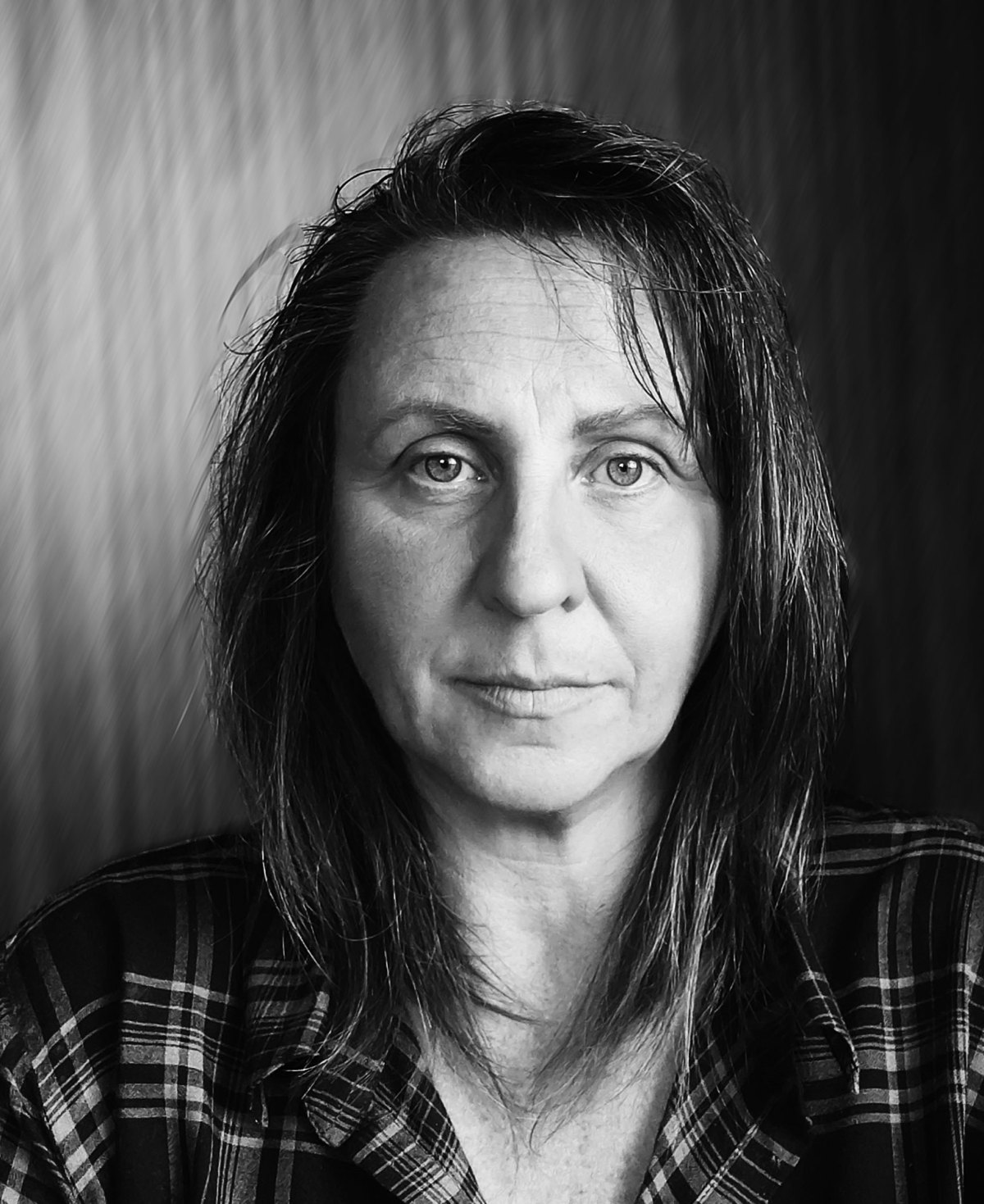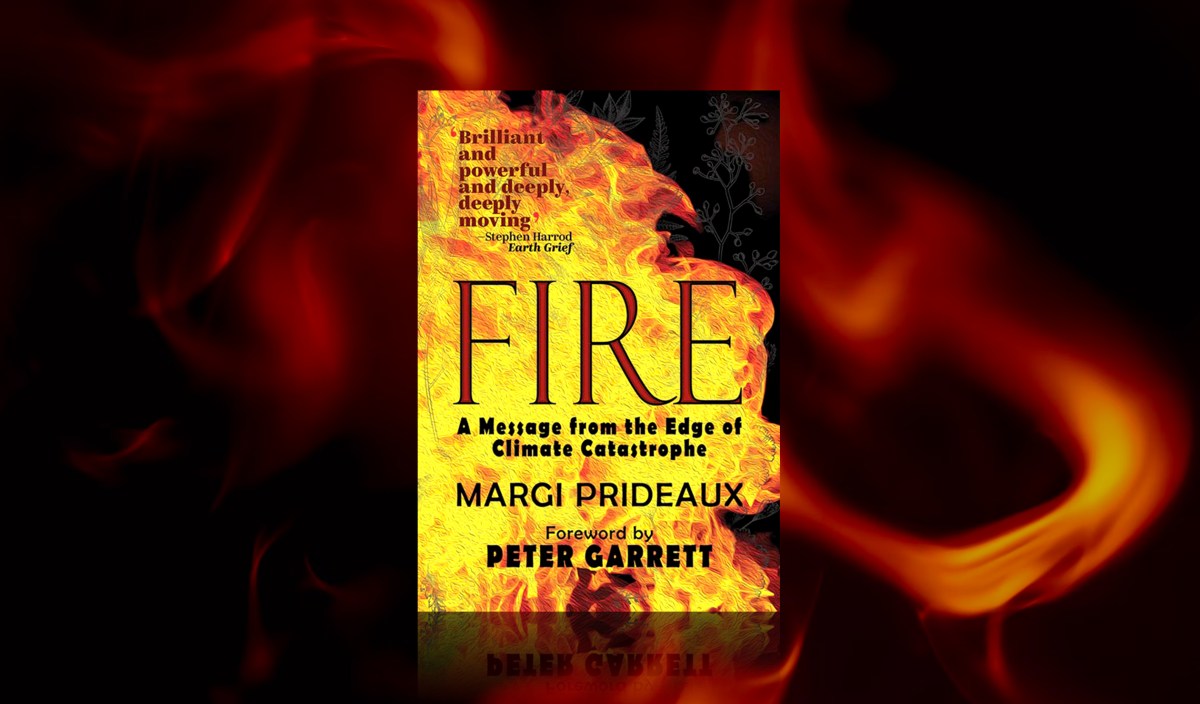Book extract: FIRE
Margi Prideaux and her husband lost their home and farm when the Black Summer fires ripped across Kangaroo Island. Her new book shares the experience of her devastated community, and also carries a stark warning about climate-change apathy.

Flinders Chase National Park after bushfires swept across Kangaroo Island in January 2020. Photo: David Mariuz / AAP
An author and academic who has written extensively about wildlife, international politics and law, Prideaux states in her introduction to FIRE that it is “a work of nonfiction born of the depths of my community’s suffering”.

Author Margi Prideaux.
“I am not a reporter flying across a scorched landscape or a journalist camping in a disaster zone. I am not a politician with an agenda to grind. I am not an outsider looking in. I am an author and an ordinary person who, along with my husband, Geoff, never truly believed a disaster of this magnitude could happen to us.
“The book shares our experience – the anger and the disillusionment – through the Black Summer wildfires and beyond and the months of recovery and discussion within our community.”
Subtitled A Message from the Edge of the Climate Catastrophe and carrying a forward by Peter Garrett, who describes it as a “must-read book for the climate crisis era”, FIRE is published this month by KI-based Stormbird Press. The following extracts, from chapters two and eight, capture the terror and devastation caused by the rapidly spreading Black Summer fires, as well as the heart-wrenching aftermath.

From chapter two: Roar
The first of Kangaroo Island’s Black Summer fires, called Duncan and Menzies respectively, were started by dry lightning on December 20, 2019. Like most of our neighbours and friends, Geoff joined the fire crews on the Duncan fire ground that first day. Many more fires ignited in the days that followed. Duncan started in the bushland on a neighbouring farm, a short 8 kilometres from our home. It gathered momentum when it reached the commercial pine and blue gum plantations and onward into private and government-protected wilderness areas. Meanwhile, Menzies raged its own warpath further east. By day’s end every fire truck on the island was in attendance at one or the other fire.
On the second day the fire station called for urgent backup from the mainland. From that day onwards, my voluntary role was to man the radios or support fire station logistics, occasionally taking a break to join Geoff in our private firefighting unit. As with so many others, around-the-clock shifts snatched away our normal lives, day and night without pause, as we fought alongside community leaders, farmers, townsfolk, and volunteers from across the country. The battle raged for another two weeks. Seasonal celebrations were cancelled as we wrestled the conflagration threatening our homes, our farms, and the wildlife we share this land with. Finally, on January 1, those fires were held behind containment lines. Duncan was stopped 50 metres from our farmhouse door.
Yet, we were collectively robbed of any relief. Another fire – by then named Ravine – had ignited and was already out of control. Lightning had struck on December 30 in the island’s jewel – Flinders Chase National Park – to the southwest of our farm. This third major fire for the island’s season rapidly built into an inferno that reached the island’s north and south coasts at the same time. Firefighters and earth movers risked their lives to build fire breaks to halt the front but three days later, on January 3, the real ordeal broke through these containments, formed two pyro-cumulonimbus (pyro-cume) clouds that sent a fast-moving fire-storm north and eastward. This previously rare phenomenon incinerated farms, animals, and infrastructure, lighting decades-old plantations like candles, and overrunning vast ecosystems and their wildlife.
Ravine – so hot, so uncontrollable – literally devoured the landscape at lethal speed. Fire trucks shielded under halos of water witnessed lethal lightning inside Ravine’s pyro-cume cloud. A weather station positioned centrally between the island’s north and south coasts registered temperatures of 428C with 140 kilometre winds before it stopped transmitting – at this point the fire was still some kilometres away. Aluminium that melts at 660C pooled across shed floors. Firefighters took refuge where they could, or fled from its front where temperatures reached 900C. Darkness eclipsed the daylight hours before the sun had set. Animals – sheep, cattle, kangaroos, wallabies, koalas – ran in panicked mobs and perished together in tortured heaps. Even the big, fast-flying birds succumbed to the fire, sometimes in mid-flight. Stunned and confused, wildlife had nowhere to hide.
Ravine destroyed our farm, our home, our dreams.
Ravine destroyed the farms, homes, and dreams of friends and neighbours, too.
Ravine stole lives: Two. A father and his son – brave firefighters – unaware of the threat bearing down upon them. Violent deaths that ignored the natural order of life, caught painfully short. A shocking loss that vibrated across the entire community.
————————–
From chapter eight: Fire-breathing Dragons
It wasn’t the fire that shook my core; that rewrote my sense of self. Not the thirty-metre flames, or massive fire storms that ripped the canopy of calm above our island two days ago. Not the showering hell-fire still raining embers across our land. It is a big, terrible event – one that continues to the east of our farm even now. That event has shape and form.
My soul becomes wounded – untethered – while standing in a familiar space rendered desolate, monotone, and utterly, profoundly silent. Not a bird, not a hum. Not a single living sound, save the Earth’s sad sigh. The giant trees along our creek-line stand as tall, blackened skeletons from their toes to their tips. Where once hills were dense with greens and ochres, now they are covered by tree bones with drifts of white at their feet. It is a landscape rendered entirely mute. Not even the wind blows. From horizon to horizon is a coil of thick, ghostly demise.
At my feet lies the remains of an eagle’s charred skeleton. I can see parts of its spine and the bones of one shoulder. I knew this soul. With their mate they had circled above our heads as we’d stood within our vines. We had watched as they taught their young, from the top of a giant swinging tree. They probably died mid-flight. I imagine their wings trailing gracefully above their heads as their beautiful bodies plummeted to the ground. This reflection opens my awareness to hundreds of smaller birds similarly scattered across the paddock. In fences are the twisted, tormented remains of too many animals for my heart to contemplate, so I avert my gaze. Bewildered – this is almost too much to absorb – I am unprepared and unaware my moment of reckoning still races towards me.
I turn to watch Geoff walk up the vineyard hill, bending slowly every few steps to caress his blackened vines. His movement is tentative, achingly gentle, as if fearful of heaping greater harm upon the already dreadful injury. This vineyard had been one of hard labour, and of love. As I watch, he stops and stands. Face toward a distant horizon, his expression suddenly caves violently inward.
I feel his silent howl …
… and my soul shatters.
FIRE: A Message from the Edge of the Climate Catastrophe is published by Stormbird Press. These extracts are republished with permission.




